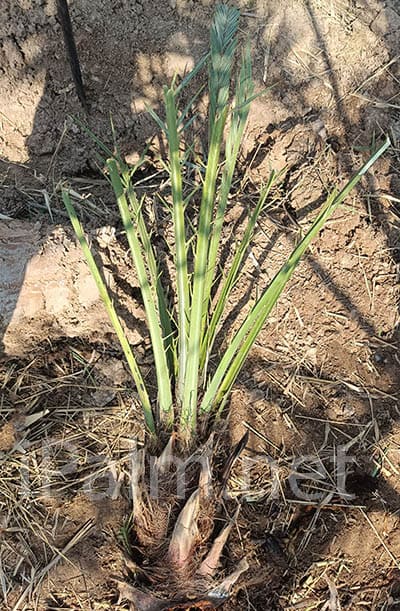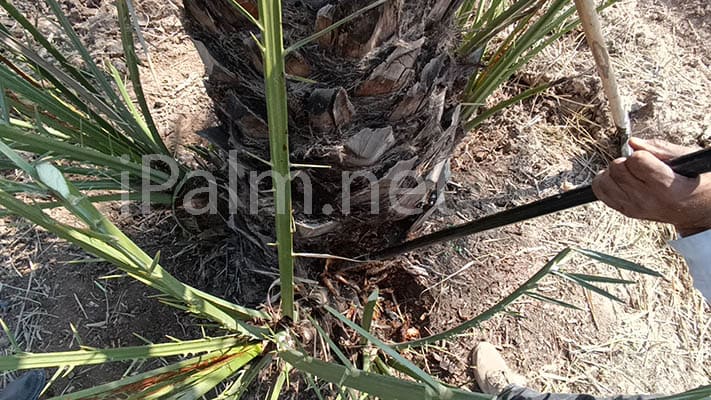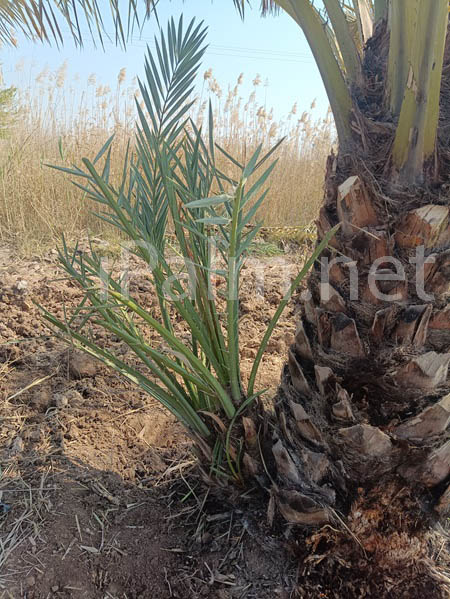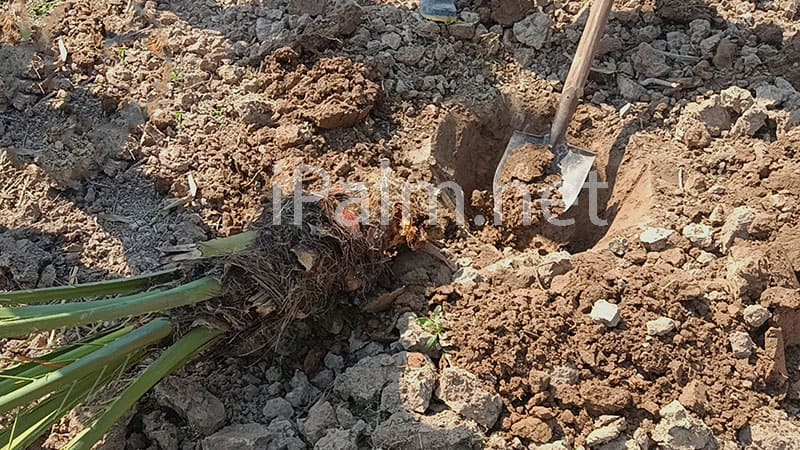Date Palm Offshoots: Propagation, Selection, and Planting
The date palm offshoot is an essential part of the date palm’s reproductive system, which naturally functions as a form of asexual propagation. Offshoots are essentially buds that grow from the base of the date palm and are used as young plants or cuttings. Propagation through offshoots is popular among farmers and horticulturists due to its numerous advantages.
Nature of the Date Palm Offshoot
Offshoots are buds that grow from the base of the date palm tree and form a significant part of its natural propagation system. These buds originate due to cell divisions in the underground tissues of the mother tree and gradually develop into an independent plant with its root system. As offshoots share the genetic structure of the mother tree, they retain the desirable traits of the original plant, such as fruit quality, resistance to environmental conditions, and disease resilience.
Time Required for Offshoot Production
The time required for the first offshoot to emerge depends on environmental conditions, the date palm variety, and care practices. Generally, a date palm tree can produce its first offshoot after 4 to 8 years from planting. At this stage, the palm tree has reached a moderate level of maturity and can absorb sufficient nutrients and water from the soil, which it then transfers to the offshoots.
How Many Offshoots Does a Date Palm Produce?
The productive lifespan of a date palm tree is typically between 30 to 50 years, during which it can produce multiple offshoots. Depending on the tree’s variety and growth conditions, each date palm tree can produce between 10 and 30 offshoots. Various factors, such as soil type, climate, irrigation levels, fertilization, and disease presence, can impact the number of offshoots produced.
Palm trees that grow in optimal conditions and with proper care will yield more offshoots. Generally, trees that produce high-quality offshoots are used in the date industry to propagate and establish new date palm orchards, as these trees can pass the best genetic traits and adaptability to the next generation.
Economic Importance and Value of Offshoots
Due to their genetic similarity to the mother tree and the retention of positive traits, offshoots are highly valuable and considered an economic resource for expanding and developing date palm orchards. By selecting and planting suitable offshoots, high-quality products with resistance to various environmental conditions can be produced, garnering attention in both domestic and international markets.

Growth and Harvesting Stages of Date Palm Offshoots
Offshoots typically emerge near the base of the mother tree and are nourished by the same root system. Once sufficiently mature, these young plants can be separated from the mother tree and planted independently. The separation and planting of offshoots must be done carefully to avoid damaging the roots or the mother tree.
Selecting the Right Offshoot
– Size and Age of the Offshoot: Larger offshoots (approximately 50 cm or more) that are mature are more suitable for planting due to their higher growth and survival chances.
– Presence of Roots: Choosing offshoots with a strong root system increases the success rate of planting. Offshoots without roots or with weak roots are unsuitable for planting.
– Health of the Offshoot: Healthy offshoots, free from diseases or pests, should be selected for planting to prevent the transmission of diseases to the new tree.
Separating the Offshoot from the Mother Tree
– Optimal Time for Separation: The best time to separate an offshoot from the mother tree is early spring or late winter when moderate temperatures give roots ample time to grow.
Careful Separation: When separating the offshoot, ensure the roots are fully and cleanly separated. Sharp and sanitized tools should be used to prevent root damage and reduce the risk of disease transmission.
– Root Protection: After separation, the roots should be covered with a moist cloth or plastic to prevent drying out.
Preparing the Soil and Digging the Planting Hole
Selecting the Planting Location: The location should be sunny and have well-drained soil. Light, sandy soils rich in nutrients are ideal for date palm planting.
– Digging the Planting Hole: Dig a hole approximately 50-60 cm in depth and width to accommodate the offshoot roots.
– Adding Fertilizer: A small amount of animal manure or compost can be added to the soil in the hole to supply necessary nutrients for the roots.
Planting the Offshoot
– Placing the Offshoot in the Hole: Place the offshoot upright in the hole, ensuring roots are completely covered by soil.
– Covering the Roots with Soil: After positioning the offshoot in the hole, cover the roots with soil and compact it enough to secure the offshoot in place.
– Initial Watering: Water the offshoot immediately after planting to allow the soil to settle around the roots, ensuring good contact. Initial watering is crucial, as it helps the roots bond with the soil more quickly.
Post-Planting Care
– Regular Watering: After planting, offshoots require regular watering. In the first few weeks, watering should be frequent and adequate. Subsequently, it should be adjusted based on soil type and weather conditions.
– Protection from Pests and Diseases: Young offshoots are particularly vulnerable to pests and diseases. Using approved pesticides and regular inspections can prevent potential issues.
– Fertilization: Offshoots require adequate nutrition. Adding appropriate fertilizers at different growth stages strengthens the root system, fostering growth and plant development.

Challenges and Limitations
– Precision Required in Separation: Separating offshoots requires skill and precision, as lack of expertise may damage the mother tree or offshoot.
– Dependence on Mother Trees: Propagation through offshoots is dependent on mother trees, limiting large-scale production.
– Disease Transmission: Offshoots can inherit diseases from the mother tree, making it essential to select healthy and resilient mother trees.
Conclusion
Date palm offshoots are a natural and cost-effective method for date palm propagation, especially popular among local farmers. By adhering to proper separation and planting techniques, it is possible to achieve favorable results in increasing the number of trees, enhancing productivity, and promoting the expansion and revitalization of date palm orchards.



My brother suggested I may like this web site. He used to be entirely right. This publish truly made my day. You can not consider just how so much time I had spent for this info! Thank you!
We are honored that this article was useful to you.